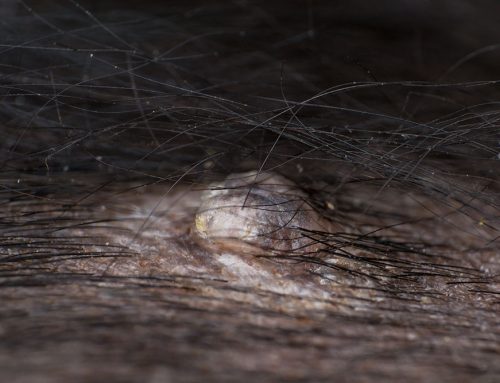About 85% of all cats and dogs develop some degree of dental disease by age 3. Cats are particularly prone to feline resorptive lesions (FRLs), which affect an estimated 20% to 60% of all cats, and close to 75% of cats 5 years of age and older. Resorptive lesions can be extremely painful for felines, who are experts at masking their pain. But, pet owners who know what to look for can identify potential signs of trouble and reduce their cat’s pain and suffering. Our Creature Comforts Veterinary Service team explains how to identify, manage, and prevent FRLs.
What causes feline resorptive lesions?
FRLs occur when the body starts to break down and absorb the teeth structures. As the condition progresses, the entire tooth can be destroyed. Lesions generally first appear along the gum line. The tooth becomes weak, and the crown snaps off and leaves the roots behind. While this feline dental condition is common, the exact cause is still unknown, although research suggests an excess of vitamin D in cat food may be to blame. Cats are more susceptible to tooth resorption as they age, and once diagnosed, the disease will more likely affect other teeth. The two main tooth resorption types are:
- Type 1 resorption — This FRL type destroys a tooth’s crown but spares the roots, leaving them relatively intact.
- Type 2 resorption — This resorption type affects a tooth’s crown and roots, with bone gradually replacing the roots’ tissues.
Left untreated, this condition progresses through the following stages:
- Stages 1 and 2 — Lesions resembling cavities form on the tooth’s enamel and extend into its cementum layer.
- Stage 3 — The deterioration advances, penetrates the tooth’s dentin, and reaches the pulp.
- Stage 4 — In this advanced stage, the tooth weakens significantly and eventually breaks.
What are resorptive lesion signs?
FRLs are extremely painful. However, in the wild, pain is viewed as a sign of weakness that leaves cats vulnerable to predators, so most cats mask their discomfort until the pain is severe. FRL signs may include:
- Red or swollen gums
- Bad breath
- Difficulty eating
- Excessive drooling
- Jaw chattering
- Pawing at the mouth
- Behavior changes
Recognizing disease signs is crucial for early intervention. However, some cats may show no clinical signs, despite their intense pain, making regular veterinary dental examinations and cleanings essential, so your veterinarian can identify and address the lesions as early as possible and help maintain your cat’s optimal oral health.
How are feline resorptive lesions diagnosed?
Resorptive lesions are often hidden beneath tartar or gum overgrowth, and your pet will need sedation for a thorough oral exam and dental radiographs, which are the only way the full extent of the condition can be diagnosed accurately. Once our team has determined damage severity, we can make an appropriate treatment plan.
How are feline resorptive lesions treated?
FRLs are graded from stages 1 to 5, based on the amount of lost hard tissue, and treatment depends on the resorption stage and location but most often involves removal of the affected tooth. In some cases, cats will need full-mouth extractions. Because the painful lesions may recur, affected cats should have oral exams, dental X-rays, and dental cleanings every six months.
Can feline resorptive lesions be prevented?

While no specific strategy can prevent FRLs in your cat, you can improve your cat’s overall oral health with:
- Regular oral exams — Schedule routine wellness care to catch dental issues early.
- A balanced diet — Provide a well-balanced, nutritious diet to support overall health, including dental health.
- Good oral hygiene — Brush your cat’s teeth regularly with a pet-friendly toothbrush and toothpaste.
- Dental treats — Offer dental treats that promote oral health and reduce plaque buildup.
- Attention to behavior — Pay attention to any changes in your cat’s behavior or eating habits, and seek prompt veterinary care.
Regular veterinary dental exams and X-rays are the best way to protect your pet from resorptive lesions and other serious periodontal diseases. To schedule your cat’s next dental appointment, contact our Creature Comforts Veterinary Service team. We want to ensure your favorite feline does not suffer unnecessary pain.







Leave A Comment